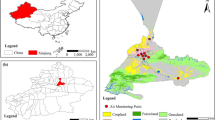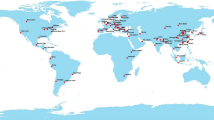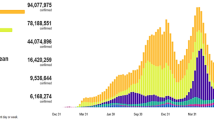Abstract
Background and purpose
In late 2019, a novel infectious disease (COVID-19) was identified in Wuhan China, which turned into a global pandemic. Countries all over the world have implemented some sort of lockdown to slow down its infection and mitigate it. This study investigated the impact of the COVID-19 pandemic on air quality during 1st January to 30th April 2020 compared to the same period in 2016–2019 in ten Iranian cities and four major cities in the world.
Methods
In this study, the required data were collected from reliable sites. Then, using SPSS and Excel software, the data were analyzed in two intervals before and after the corona pandemic outbreak. The results are provided within tables and charts.
Results
The current study showed the COVID-19 lockdown positively affected Iran’s air quality. During the COVID-19 pandemic, the four-month mean air quality index (AQI) values in Tehran, Wuhan, Paris, and Rome were 76, 125, 55, and 60, respectively, which are 8 %, 22 %, 21 %, and 2 % lower than those during the corresponding period (83, 160, 70, and 61) from 2016 to 2019.
Conclusions
Although the outbreak of coronavirus has imposed devastating impacts on economy and health, it can have positive effects on air quality, according to the results.
Similar content being viewed by others
Introduction
Millions of people have been affected by coronavirus disease 2019 resultant from severe acute respiratory syndrome coronavirus 2 (SARS-CoV-2) worldwide since its arrival in December 2019 in Wuhan, China [9]. Coronavirus quickly spreading all over China and to other countries was officially termed as coronavirus disease 2019 (COVID-19) by the World Health Organization (WHO) [13]. Within five months, the disease had affected more than 210 countries, becoming a global pandemic and bringing devastating consequences [23]. The disease may have symptoms including shortness of breath, and cough in addition to fever [8]. As of July 22, 2021, there were 192,853,619 confirmed cases and 4,142,788 deaths (https://www.worldometers.info/coronavirus/). Lockdown measures were run all over the world for reducing the spread of SARS-CoV-2, with various timing and severity based on the start of the epidemiological crisis and the infections evolution. A unique opportunity is presented by shifts in human mobility patterns caused by the enforced confinement/ lockdown related to the COVID-19 pandemic to recognize the impacts of human existence on urban and background air quality. It also advances our comprehension on air pollution [18].
Iran has been one of the most affected countries, which raises the question as to what the impact has been on air quality as many cities such as Tehran are usually extremely polluted. By initiating the worldwide COVID-19 pandemic, reduction has been observed in air pollution in some parts of the world compared to the conditions before and within the COVID-19 crisis [14]. There has been a moderate to significant lowering of air pollution in most parts of the world including China, Italy, and California [2]. In addition to particulate pollutants, greenhouse gas emissions have also fallen across continents [11]. Regarding greenhouse gas emissions, 72 and 11 % of the transport sector’s greenhouse gas emissions are accounted for by driving and aviation, respectively [16]. A reduction in NO2 pollution was first apparent near Wuhan, but spread across the rest of the country, and eventually worldwide. In central China, NO2 emissions were reduced by as much as 30 % [17]. CO2 emissions, another common tracer of air pollution [10], decreased by 25 % in China and by 6 % worldwide [6].
The Air Quality Index (AQI) is used by government agencies to communicate to the public how polluted the air currently is and provides warnings about short-term or long-term effects of air pollution on public health. The establishment of ambient air quality standards can provide a basis for and guarantee the management of ambient air quality in order to protect human health, maintain ecological environmental safety, and promote harmonious, sustainable development that protects people, society, and nature [25]. The aim of this study was to investigate the effect of COVID-19 lockdowns on the ambient air quality in Iran’s largest cities, and contextualized by comparing their results to Wuhan, Rome, Madrid, and Paris.
Materials and methods
Study area
In order to achieve the purpose of this study, ten populated cities were selected in Iran in addition to four major cities outside Iran (Fig. 1; Table 1).
AQI Data
To describe the air pollution level in each Iranian city, we obtained AQI data for four first months (1st January to 30th April) 2016–2020 from the Iran National Air Quality Monitoring System (http://aqms.doe.ir). Related information for cities outside Iran was collected from the World Air Quality Index project (https://waqi.info). According to the United States Environmental Protection Agency (US EPA), the AQI is based on the level of six atmospheric pollutants: sulfur dioxide (SO2), nitrogen dioxide (NO2), suspended particulates (PM2.5, PM10), carbon monoxide (CO), and ozone (O3). Based on the concentrations of each pollutant, an Individual Air Quality Index (IAQI) score is assigned (Eq. 1), and the final AQI is the highest of these six scores (Eq. 2). A higher AQI signifies more atmospheric pollutants in air and a higher level of air pollutions [19, 20].
IAQIP: the air quality sub index for air pollutant p.
CP: the concentration of pollutant p.
Clow: the concentration breakpoint that is ≤ CP.
Chigh: the concentration breakpoint that is ≥ CP.
Ilow: the index breakpoint corresponding to Clow.
Ihigh: the index breakpoint corresponding to Chigh.
AQI values vary from “0” to “500” and its magnitude is proportional to pollutant concentrations in ambient air; therefore, higher AQI values indicate more serious health implications. If the AQI is greater than “100,“ then the air quality is becoming unhealthy for certain groups (Jassim & Coskuner, 2017).
Results and discussion
In the present study, data over a 5-year period were analyzed. Table 2 presents the minimum, maximum, and average of AQI from Jan-Apr 2016–2019 and Jan-Apr 2020 in ten Iranian megacities. Statistically significant differences between the two periods are denoted by p values below 0.05. In Tabriz, the minimum, maximum, and mean of AQI from Jan-Apr 2016–2019 were 41, 191, and 93 respectively. These values for the same period in 2020 were 21, 145, and 64 respectively. The AQI average during Covid-19 was 31 % lower in comparison to 2016–2019, and this change was statistically significant (P < 0.0001). In Ahvaz, one of the most polluted cities in Iran, the AQI maximum in Jan-Apr 2016–2019 was 216, which is classified as “very unhealthy”, but this value decreased to 165 in 2020. Consequently, the AQI maximum changed from “very unhealthy” to “unhealthy”. Furthermore, the mean AQIs in Jan-Apr 2016–2019 and 2020 were 111 and 95, respectively; therefore, there was a change from “unhealthy for sensitive groups” to “moderate”. In Tehran, the capital of Iran, the minimum and average AQI in Jan-Apr 2020 exhibited a 37 and 8 % decrease in comparison to the same period in 2016–2019. In Kermanshah, mean of AQI in Jan-Apr 2016-2019 was in the “moderate” category, but during Covid-19 pandemic changed to being “good”.
Figure 2 compares AQI averages between Jan-Apr 2016–2019 and Jan-Apr 2020 for the same ten Iranian cities. For example, the average AQI in Ahvaz in Jan-Apr 2020 was 95, which was 14.4 % lower than that during the period from 2016–2019 (AQI = 111). The AQI in Shiraz was 69 in Jan-Apr 2020 and 15 % lower than that during the period from 2016–2019 (AQI = 81). The AQI in Tabriz for Jan-Apr 2020 was 64, which was 31 % lower than that during the period from 2016–2019 (AQI = 93). In Qom and Mashhad, the average AQIs showed a 2 % and a 6 % decrease during Covid-19 pandemic in comparison to Jan-Apr 2016–2019 (p = 0.582 and p = 0.013). In Jan-Apr 2020, the AQI average in Arak decreased from 84 to 69 (p = 0.000) in the same period in 2016–2019. As shown in Fig. 2a, the highest and lowest changes in AQI were seen in Kermanshah (48 %) and Isfahan (-13 %), respectively. Figure 2b presents the four-month average distribution of AQI classes in ten cities in Iran. As expected, Ahvaz had the highest AQI before and after coronavirus pandemic.
The four-month average distribution of AQI classes in capital of Iran and cities outside Iran are illustrated in Fig. 3. In Tehran, the proportions of AQI classes I, II, III, IV, V, and VI were 0 %, 77 %, 23 %, 0 %, 0 %, and 0 %, respectively, during Jan-Apr 2016–2019. These same classes in Jan-Apr 2020 accounted for 13 %, 72 %, 14 %, 1 %, 0 %, and 0 % of the total data points, respectively. Compared with the average AQI in Jan-Apr 2016–2019, the AQI Class I in Jan-Apr 2020 increased to 13 %; Class II decreased to 72 %; and Class III decreased to 14 %. In Jan-Apr 2016–2019, in Wuhan, the most polluted city in this study, there was no AQI classes I and II, but class II increased to 20 % during COVID-19. On the other hand, “very unhealthy” and “unhealthy” categories showed a 4 % and a 33 % decrease, respectively, in Jan-Apr 2020. In Rome, the capital of Italy, class I increased from 15 % in 2016–2019 to 36 % in 2020. Furthermore, the “moderate” category showed a 34 % decrease during COVID-19 in comparison to Jan-Apr 2016–2019. In Paris, the “good” category in Jan-Apr 2016–2019 was 8 %, but increased to 49 % in the same time in 2020. In Madrid, the capital of Spain, the proportions of classes I, II, III, IV, V, and VI in Jan-Apr 2016–2019 were 62 %, 38 %, 0 %, 0 %, 0 %, and 0 %, respectively. Compared with the average AQI in Jan-Apr 2016–2019, AQI Class I in Jan-Apr 2020 decreased to 41 %, and AQI Class II increased to 56 %.
Figure 4 compares AQI averages between Jan-Apr 2016–2019 and Jan-Apr 2020 for Tehran and four major cities outside Iran. Tehran’s AQI in Jan-Apr 2020 was 76, which was 8 % lower than that during the period from 2016 to 2019 (AQI = 83). The AQI in Wuhan in Jan-Apr 2020 was 125, which was 22 % lower than that during the period from 2016 to 2019 (AQI = 160). Because the coronavirus was first detected in China, and resulted in a strict lockdown of Wuhan followed by mobility restrictions throughout the country, more studies focus on air pollution in China than other countries. Xu et al. [26], Wang and Su [24], Shi and Brasseur [21], Cole et al. [4], Fan et al. [7], and Almond et al. [1] all found that lockdowns and strict restrictions on economic activities in the city of Wuhan and other regions of China significantly reduced the level of major air pollutants. Shi and Brasseur [21] calculated that surface PM2.5 and NO2 levels decreased by 35 and 60 %, respectively, in northern China during the COVID-19 pandemic. Such a large short-term drop in air pollution is unprecedented in China, with only the strict regulations put in place during the 2008 Beijing Olympics producing comparable reductions [3]. However, most of these studies also found that O3 increased by as much as a factor of 2 due to reductions in nitrogen oxides. Studies of the effect of COVID-19 in China [7, 21], Milan, Italy [5], and Delhi, India [15] have also reported increases in NO2 and other pollutants with concomitant reductions in O3 [7, 21]. Ground-level O3 can be diminished by nitrogen oxides, so it is not uncommon to measure decreases in O3 when levels of NO2 rise [12, 21]. However, in some European cities where the sources of pollution are more varied such as from residential and commercial buildings, industrial activities, and road traffic, the changes are less apparent as such emissions could have continued despite lockdown [22].
Conclusions
During the COVID-19 outbreak, there was a dramatic decrease in human activities, resulting in significant reductions in pollutant levels in the atmosphere. In this study, we used AQI data to investigate the impact of the COVID-19 outbreak on air quality. We compared AQI mean values in January-April 2016–2019 with those from January-April 2020. The current study showed that the COVID-19 pandemic positively affected ambient air quality in Tehran, Mashhad, Ahvaz, Tabriz, Shiraz, Arak, Qom, Kermanshah, and Karaj, but Isfahan showed a reverse trend. Compared to Madrid, Paris, and Rome, Wuhan experienced the greatest reductions in AQI (22 %) in January-April 2020. The results demonstrate that it is possible to have significant air quality improvement by effective traffic control programs along with promoting green commuting and the technologies to expand remote working. Although the COVID-19 control measures restricted travel freedom and economic development and forced people to conduct many activities remotely, a benefit has been improvement in ambient air quality.
References
Almond D, Du X, Zhang S. Ambiguous pollution response to COVID-19 in China. Cambridge: National Bureau of Economic Research; 2020.
Anjum NA. Good in The Worst: COVID-19 Restrictions and Ease in Global Air Pollution; 2020. https://doi.org/10.20944/preprints202004.0069.v1
Chang H-H, Meyerhoefer C, Yang F-A. COVID-19 prevention and air pollution in the absence of a lockdown. Cambridge: National Bureau of Economic Research; 2020.
Cole MA, Elliott RJ, Liu B. The impact of the Wuhan Covid-19 lockdown on air pollution and health: a machine learning and augmented synthetic control approach. Environ Resour Econ. 2020;76:553–80.
Collivignarelli MC, Abbà A, Bertanza G, Pedrazzani R, Ricciardi P, Miino MC. Lockdown for CoViD-2019 in Milan: What are the effects on air quality? Sci Total Environ. 2020;732:139280.
Dutheil F, Baker JS, Navel V. COVID-19 as a factor influencing air pollution? Environ Pollut (Barking, Essex: 1987). 2020;263:114466.
Fan C, Li Y, Guang J, Li Z, Elnashar A, Allam M, de Leeuw G. The impact of the control measures during the COVID-19 outbreak on air pollution in China. Remote Sens. 2020;12:1613.
Hadei M, Hopke PK, Jonidi A, Shahsavani A. A letter about the airborne transmission of SARS-CoV-2 based on the current evidence. Aerosol Air Qual Res. 2020;20:911–4.
Hadei M, et al. Presence of SARS-CoV-2 in the air of public places and transportation. Atmos Pollut Res. 2021;12:302–6.
Hanaoka T, Masui T. Exploring effective short-lived climate pollutant mitigation scenarios by considering synergies and trade-offs of combinations of air pollutant measures and low carbon measures towards the level of the 2C target in Asia Environ Pollut, 2020;261:113650.
Henriques M. Will Covid-19 have a lasting impact on the environment?. 2020. https://www.bbc.com/future/article/20200326-covid-19-the-impact-of-coronavirus-on-the-environment. Accessed 14 May 2020
Jhun I, Coull BA, Zanobetti A, Koutrakis P. The impact of nitrogen oxides concentration decreases on ozone trends in the USA. Air Qual Atmos Health. 2015;8:283–92.
Baboli Z, Neisi N, Babaei AA, Ahmadi M, Sorooshian A, Tahmasebi Birgani Y, Goudarzi G (2021) On the airborne transmission of SARS-CoV-2 and relationship with indoor conditions at a hospital. Atmos Environ 261:118563.
Liu Q, et al. Spatiotemporal impacts of COVID-19 on air pollution in California. USA Sci Total Environ. 2021;750:141592.
Mahato S, Pal S, Ghosh KG. Effect of lockdown amid COVID-19 pandemic on air quality of the megacity Delhi, India. Sci Total Environ. 2020;730:139086. https://doi.org/10.1016/j.scitotenv.2020.139086
Masson-Delmotte V, Zhai P, Pörtner HO, Roberts D, Skea J, Shukla PR, et al. “IPCC, 2018: summary for policymakers. In: global warming of 1.5°C. An IPCC special report on the impacts of global warming of 1.5°C above pre-industrial levels and related global greenhouse gas emission pathways The Context of Strengthening the Global, Aromar Revi (2018). https://www.ipcc.ch/site/assets/uploads/sites/2/2019/05/SR15_SPM_version_report_LR.pdf
NASA. Airborne nitrogen dioxide plummets over China. National Aeronautics and Space Administration. NASA: Earth Observatory. 2020. Available at: https://www.earth observatory.nasa.gov/images/146362/airbornenitrogendioxide-plummets-over-china
Querol X, et al. Lessons from the COVID-19 air pollution decrease in Spain: Now what? Sci Total Environ. 2021;779:146380.
She Q, et al. Air quality and its response to satellite-derived urban form in the Yangtze River Delta, China. Ecol Indic. 2017;75:297–306.
Shen F, Ge X, Hu J, Nie D, Tian L, Chen M. Air pollution characteristics and health risks in Henan Province, China. Environ Res. 2017;156:625–34.
Shi X, Brasseur GP. The response in air quality to the reduction of Chinese economic activities during the COVID-19 outbreak. Geophys Res Lett. 2020;47(11):e2020GL088,070. https://doi.org/10.1029/2020GL088070
Shrestha AM, Shrestha UB, Sharma R, Bhattarai S, Tran HNT, Rupakheti M. Lockdown caused by COVID-19 pandemic reduces air pollution in cities worldwide. 2020. https://doi.org/10.31223/osf.io/edt4j
Travaglio M, Yu Y, Popovic R, Selley L, Leal NS, Martins LM. Links between air pollution and COVID-19 in England. Environ Pollut. 2021;268:115859.
Wang Q, Su M. A preliminary assessment of the impact of COVID-19 on environment – a case study of China. Sci Total Environ. 2020;728:38915. https://doi.org/10.1016/j.scitotenv.2020.138915
Xu K, Cui K, Young L-H, Wang YF, Hsieh YK, Wan S, Zhang J (2020) Air quality index, indicatory air pollutants and impact of COVID-19 event on the air quality near Central China. Aerosol Air Qual Res 20:1204–1221. https://doi.org/10.4209/aaqr.2020.04.0139
Xu K, Cui K, Young L, Hsieh Y, Wang Y, Zhang J, Wan S. Impact of the COVID-19 event on air quality in Central China. Aerosol Air Qual Res. 2020;20:915–29.
Acknowledgements
We would like to thank the Ahvaz Jundishapur University of Medical Sciences (AJUMS) for the financial support of this grant project (APRD-0003).
Author information
Authors and Affiliations
Corresponding author
Ethics declarations
Conflict of interest
The authors declare that they have no known conflict of interest, competing financial interests, or personal relationships that could have appeared to influence the work reported in this paper.
Additional information
Publisher’s Note
Springer Nature remains neutral with regard to jurisdictional claims in published maps and institutional affiliations.
Rights and permissions
About this article
Cite this article
Yazdani, M., Baboli, Z., Maleki, H. et al. Contrasting Iran’s air quality improvement during COVID-19 with other global cities. J Environ Health Sci Engineer 19, 1801–1806 (2021). https://doi.org/10.1007/s40201-021-00735-5
Received:
Accepted:
Published:
Issue Date:
DOI: https://doi.org/10.1007/s40201-021-00735-5








